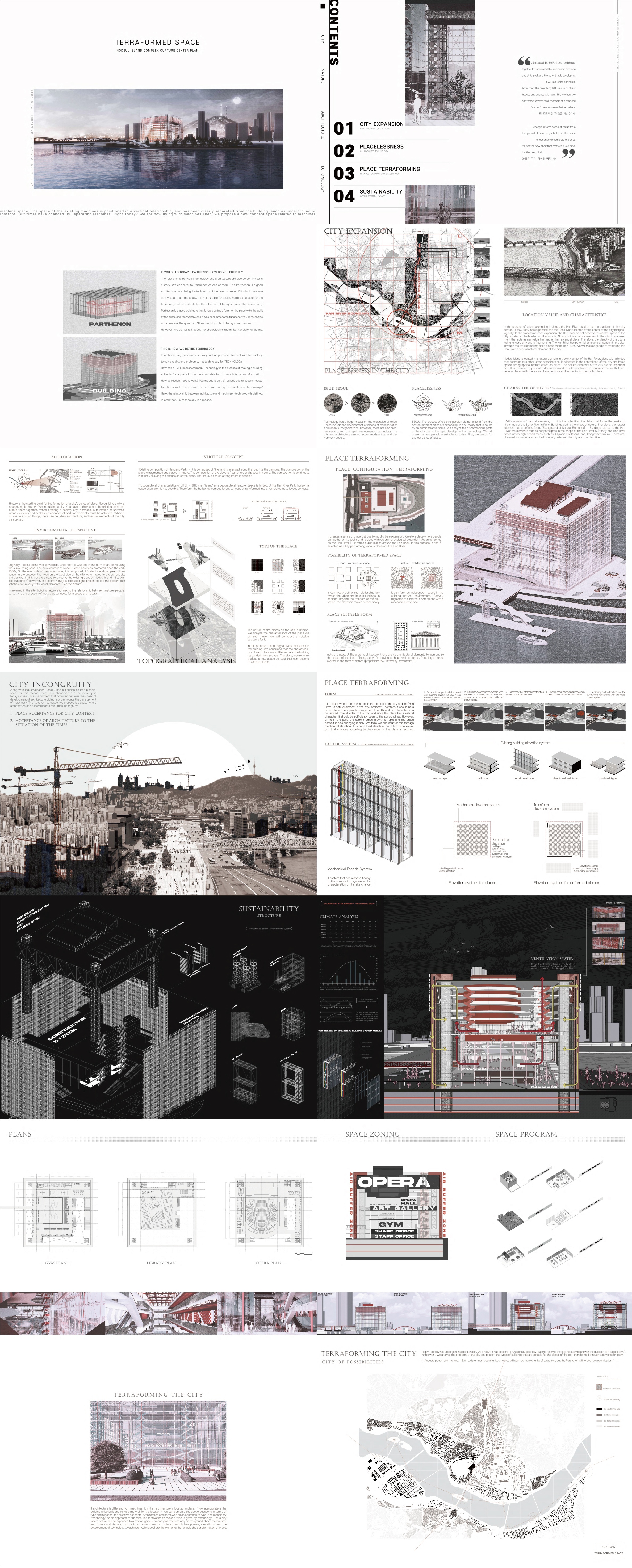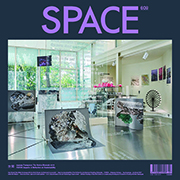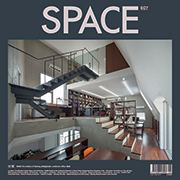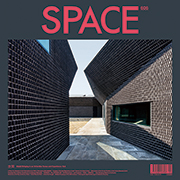The 35th Space Prize for International Students of Architecture Design
[건축 vs. 기계, Architecture vs. the Machine]
SUBJECT
Architecture has continuously been evolving with
machines. Thus, the dimensions of the living spaces
have been influenced. The refrigerator affecting the
size of the kitchen and the television for the
living room. High-rise buildings were made possible
by the elevators. The escalators also allowed people
to circulate deep into a box, making possible for
departments stores and shopping malls. Vehicles made
long-distance travel convenient and have made
Mega-cities possible. At the same time, they occupy
a large part of the construction with parking lots.
The rapid pace of global development has
been accelerating and the pandemic was another
opportunity to further propel the progress. With the
internet, mobile devices, and cloud servers, it is
no longer necessary to work together in one place,
and it is an era where everything can be done at
home. The combination of mobile device’s
applications and artificial intelligence is evolving
urban logistics. They lead to a physical changes in
architecture and urban environments.
In 1923 almost hundred years ago, Le
Corbusier's in his publication ‘Towards a New
Architecture’, remarked that "A house is a machine
for living in" it is well known. It was the result
of mass production and standardization from a new
spirit defining the industrial age and observations
from machines such as automobiles, airplanes, and
passenger ships. From it. Which we all know too
well, a new residential space was created. It was
said to understand and utilize the meaning and
aesthetics of machines. The machines’ functionality,
standardization, and logical disposition can
contribute to architecture.
Approximately, a century later, wouldn’t we be
in a similar situation? Can we discover new
architecture from the various phenomena we face
today? Is there any construction that responds to
the challenges of new machines?
For the 35th space prize for International Student
of Architecture Design, we would like to investigate
new and diverse situations presented by machines. We
would like further to discover numerous
possibilities and contemplate how architecture can
keenly responds to them.
Radio-frequency identification (RFID) in
mobile phones and Closed-circuit television (CCTV)
cameras installed everywhere converts people's
consumption behavior and behavior patterns into big
data. They are able to predict not only the business
feasibility of local alley stores but also, product
to be displayed at big mart stalls. Utilization of
headgear gives access to the virtual world where
there are no physical restrictions.
Air drones are presenting new possibilities in
terms of transportation and other delivery systems.
Electric vehicles and autonomous driving requires
shift in thinking about gas stations and parking
lots.
Self-driving autonomous vehicles do not
require a driver’s seat. They are evolving into an
independent space that allow activities other than
driving (which requires acknowledgement of the space
and design). Global automakers are scrambling to
introduce city planning based on their respective
technologies and automobiles.
As described, many changes are unfolding in
our lives from hardware to software. Is there
anything that architecture can respond to this
phenomenon? Directly or indirectly, it is
significantly influenced by spatial configuration
and environment. However, it is difficult to find an
architectural response or imagination that can
correspond to it.
JURY REPORT
The 35th Space Prize for International Students of Architecture Design, ‘Architecture vs Machine’ is a theme for observing and imagining new possibilities of architecture through machines. Perhaps it was an unfamiliar subject and an unfamiliar relationship of the two keywords. So, a little less submission than previous Prize were received. Nevertheless, most of the submitted works contained various thoughts and unexpected interesting stories. The 11 finalists presented their new architectural interpretations for machines (techniques) that fit the theme. In particular, each project presented architecture as a result of imagining and thinking through dense observation and analysis, and was able to identify various solutions beyond the scope of architecture as we know. In particular, top four works were able to discover the future of young prospective architects through profound research, logical power, high-quality expression, and sharply revealed architectural imagination. I applaud all the students who made great achievements through their hard work, regardless of awards.
GRAND PRIZE

JUNG, YE LIM + KIM, YU RIM + LEE, JUNG MIN
KONKUK UNIVERSITY
GRAVITY CONVERSION SYSTEM
 PROBLEM
PROBLEM
Currently, housing in Korea has problems with house
prices and overcrowding. The reason for this is that
the land we can use has a limited area (X and Y
axes) due to gravity. In order to overcome the limit
of the land area, it is time to think of an
architecture that overcomes gravity rather than a
method that withstands gravity.
PROPOSAL
If the same force is applied in the opposite
direction to the direction of gravity, the object
will stop; if a large force is applied in the other
direction, the object will move in the direction in
between. Based on these assumptions, we propose a
pin system that utilizes electromagnetic force to
create artificial gravity.
GRAVITY CONVERSION PIN SYSTEM
The gravity-altering pin system generates a magnetic
field with electricity, and that force makes
artificial gravity possible. Using GCPS, the
construction area was expanded to areas that were
not possible with conventional gravity, rather than
development that creates flat land.
DESIGN
The space arranged on the axis reversed by
artificial gravity brings a special experience. On
the path from the trail to Oksudong Cliff 1-1, the
intensity of artificial gravity changes. This
gradually changes the axis of gravity and presents a
new landscape. The spaces using the steep slopes of
the mountains make the concept of layers disappear
and induce a natural flow of movement. In the
spatial composition, we focused on maintaining
familiarity even with large system changes. The
courtyard, skylight, and windows for different views
that are only possible on the reversed gravity axis
were planned, and the shape of the house viewed from
the city (existing gravity elevation – roof surface
based on artificial gravity) reminds us of a
familiar landscape.
Jury’s comment
It is a project that allows us to imagine things we
have never seen before. Through the artificial
gravity devices with knowledge from physics and in
mechanics, the project proposes a solution to
current issues of the urban and architectural
environment. In particular, the plan, elevation, and
section familiar to us intersect and unfold as a new
axis, and the spaces of perspective, observation,
and imagination presented in juxtaposition with the
everyday environment. Complex calculation formulas
and elaborately disassembled mechanical devices was
represented in stark contrast to the simple
architectural form. The strategy with the ordinary
form of architecture was outstanding to make us to
understand whole processes and achievements.
PRIZE OF EXCELLENCE

Hyun Jun Cho
Eduardo Cilleruelo Teran
Cornell
University
Data Monumentality
 DATA MONUMENTALITY: Reclaiming Public
Data
DATA MONUMENTALITY: Reclaiming Public
Data
Our investigation begins from one question: where is
contemporary life situated in the epoch of digital
transformations? When we sit at our desk and receive
a
new message on one of our screens, how do we make
sense
of the processes and physical infrastructures that
make
this possible? We envision not only the future of
this
infrastructural system but make further attempts to
imagine the possibilities of its physical reality
and
potential political implications.
As revealed in our initial case study of Equinix,
the
world’s largest data infrastructure company, the
physical reality of the data industry has been
disregarded and intentionally concealed from the
public
eyes, despite their deep penetration into our daily
activities. We are no longer able to perform our
day-to-day duties without using the internet that
travels through one of Equinix’s facilities,
although we
cannot see their facilities around us. The problem
that
we challenge here is this disparity between the
ubiquitous internet connection and the displacement
of
physical infrastructures from the urban centers. We
believe that this problem is at the risk of
centralizing
the power to the hands of private monopolies. We
call
this digital parasitism, and the further studies
seek
militant strategies to battle against the private
monopolization of internet infrastructure – so as to
reclaim public data back to the hands of the
individual
end users from this digital feudalism. As a
resolution,
we imagine a monumental public data infrastructure
located in the middle of Manhattan.
This tower establishes and maintains the
exponentially
growing urban data network, while serving as a civic
device to reveal the system to the public eyes. From
conduits to cables and tanks, every process and
physical
operation that enables distribution and processing
of
data becomes transparent and habitable in this
tower.
This tower democratizes and reclaims data back to
the
public. Architecture of the tower depicts the future
that we envision. Infinite data accumulation is no
longer limited in the initial boundary of the
building.
This tower provides a porous structural framework,
and
the equipment is incrementally installed as the
public
demand increases. The form of the tower is itself
the
physical manifestation of the public data usage. The
tower grows, and no one has authority to define its
final form. Growing inside the James Farley
building,
the tower introduces new public monumentality by not
only expressing civic ideals but also generating
common
goods for the district. It utilizes excess heat from
the
machines by distributing it to the district and
providing hanging civic spaces within its porous
structure to hold various public activities. Data
infrastructures no longer crawl in the shades of the
city but boasts its presence at the heart of the
city.
Our commitment is to envision an immediate
technological
future that is already in the progress.
Jury’s comment
This project is about a proposal as a new method of
data center that has penetrated deeply into the
urban environment. Contrary to the reality of a huge
concrete mass that has been hidden for safety,
proposed mechanical devices are actively used as the
outer shell and structure of architecture. By
revealing and showing them, Data center get safety
and security. Furthermore, it discovers
possibilities that people can utilize. It was
excellent in observing and suggesting the problems
of modern cities from a new perspective through a
paradoxical method. Also, whole representation in
the form of propaganda was very effective and
outstanding to strongly asserts this paradoxical
content.
SPECIAL PRIZE
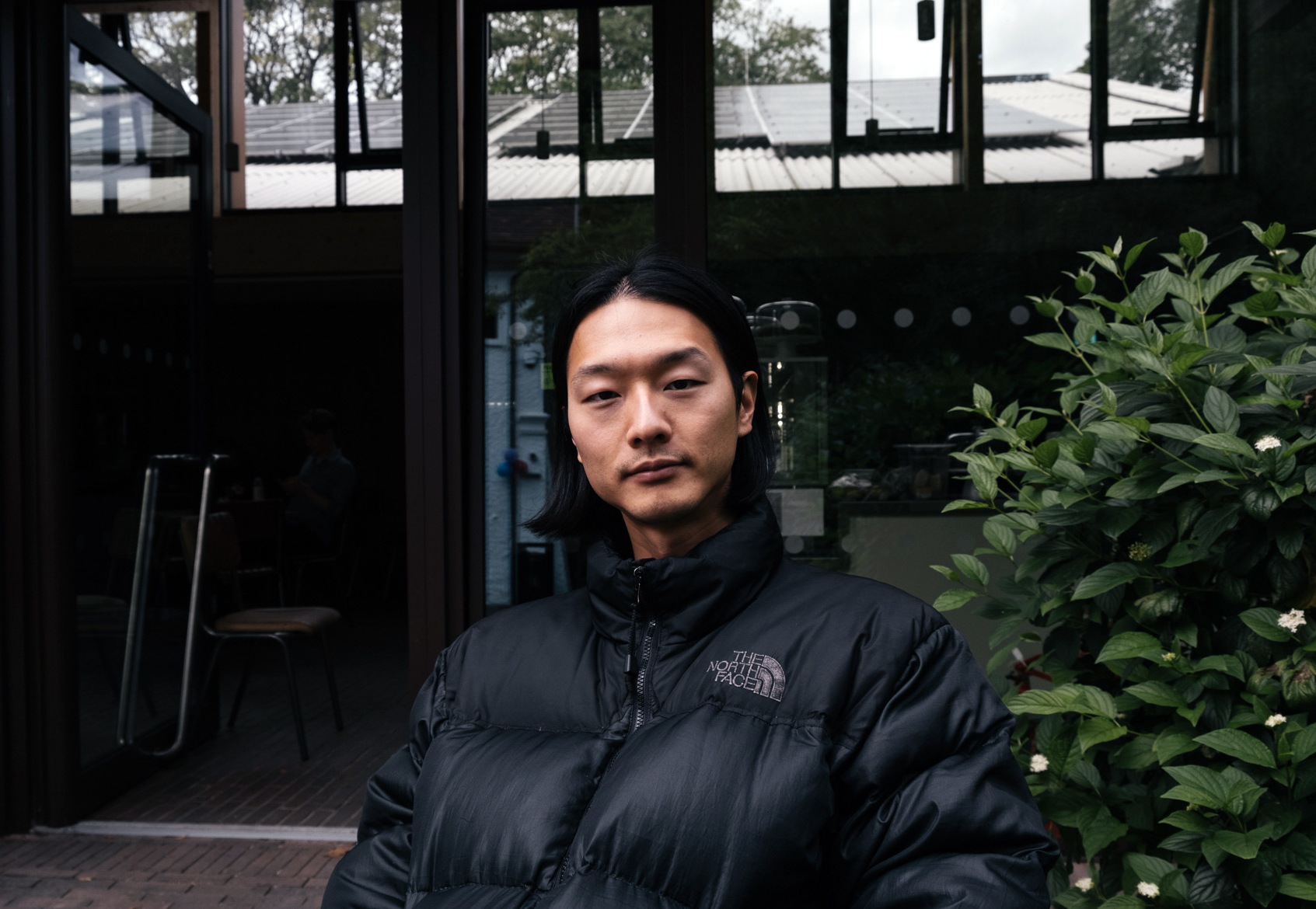
LEE, JANG HEE
Architectural
Association
Cabinet of Data
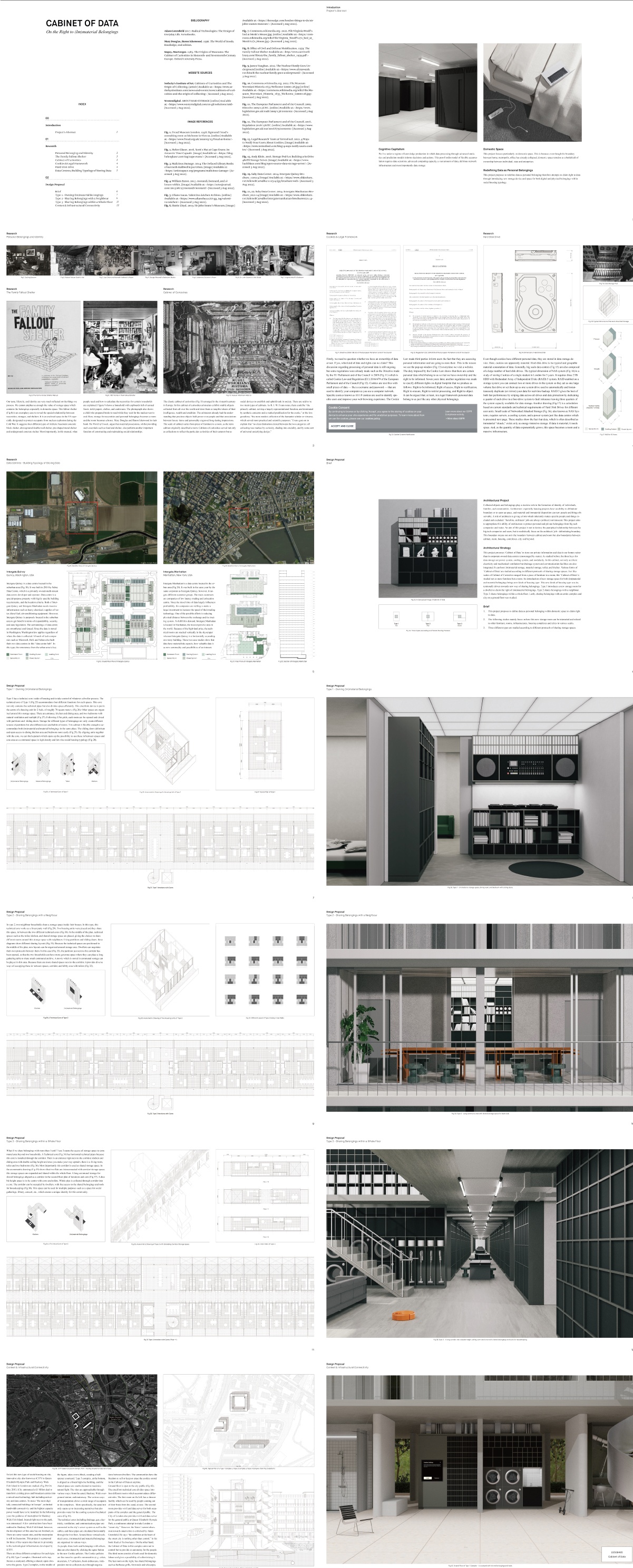 Cabinet of Data: on the right to
(im)material belongings
Cabinet of Data: on the right to
(im)material belongings
We live under a regime of knowledge production in
which service users are forced to produce data, and
decisions and actions are informed by processing the
data through advanced statistics and prediction
models. This post-Fordist model of flexible
accumulation requires data scientists, a vast amount
of data, delirious network infrastructure and most
importantly data storage.
This project focuses particularly on domestic space.
This is because even though the boundary between
home, office, metropolis has already collapsed,
domestic space remains as a battlefield of ownership
between individual, enterprises, and state.
Brief
- This project tries to redefine data as personal
belonging therefore attempts to claim right to data
through introducing new storage device and space for
both digital and physical belongings within social
housing typology.
- Following studies mainly focus on how this new
storage room can be interacted and related to other
furniture, rooms, infrastructures, housing complexes
and cities in various scales.
- Three different types are studied according to
different protocols of sharing storage spaces.
Collected objects and belongings play a decisive
role in the formation of identity of individuals,
families, and communities. And architecture,
especially housing projects have an ability to
delimitate boundary or to open up space, and
material and immaterial disposition can turn people
and things observable. This project aims to
appropriate this ability of architecture to protect
personal and private belongings by exploring the
boundaries between cabinet, room, housing and
beyond.
Jury’s comment
Based on in-depth research (from the past with
beginning of civilization to the present with
digital data, a project is delved into the ownership
about the virtual data we made everyday. The project
identifies the relationship between the material
world and the non-material world facing people in
terms of actions, behavior, and space in history. It
shows that architecture is not irrelevant to
technology, society, and politics. It proposes
space, architecture, and infrastructure as a role in
coordinating these complex relationships.
Architectural solutions are compared and verified
from individual residential spaces to collective
housing and community spaces. All presentations are
very delicate, refined and well-readable, like
alphabet (a well written thesis).
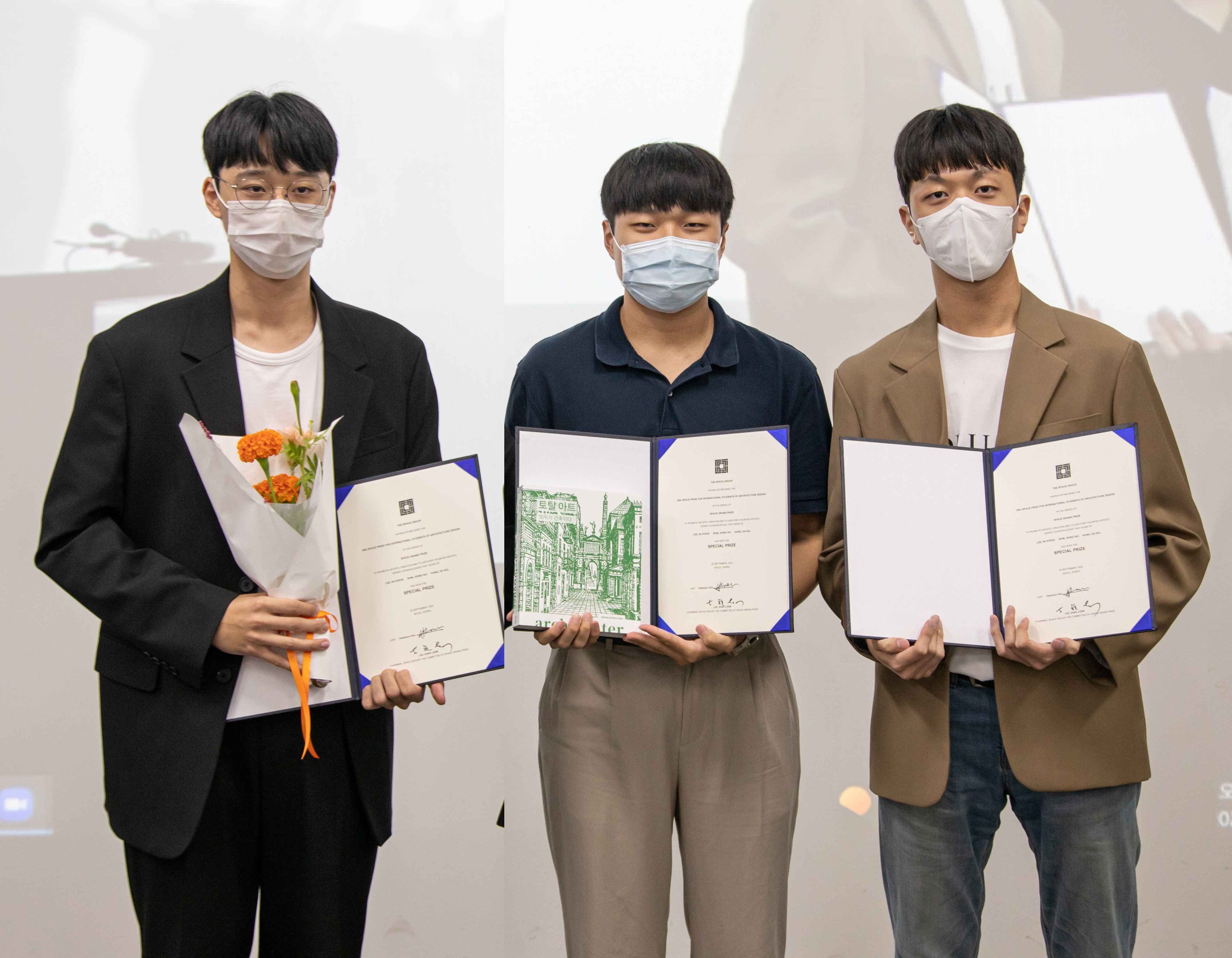
LEE, IN HYEOK
SHIN, DONG HUI
KANG,
DA
SOL
KOREA UNIVERSITY
Parasitic Proliferator
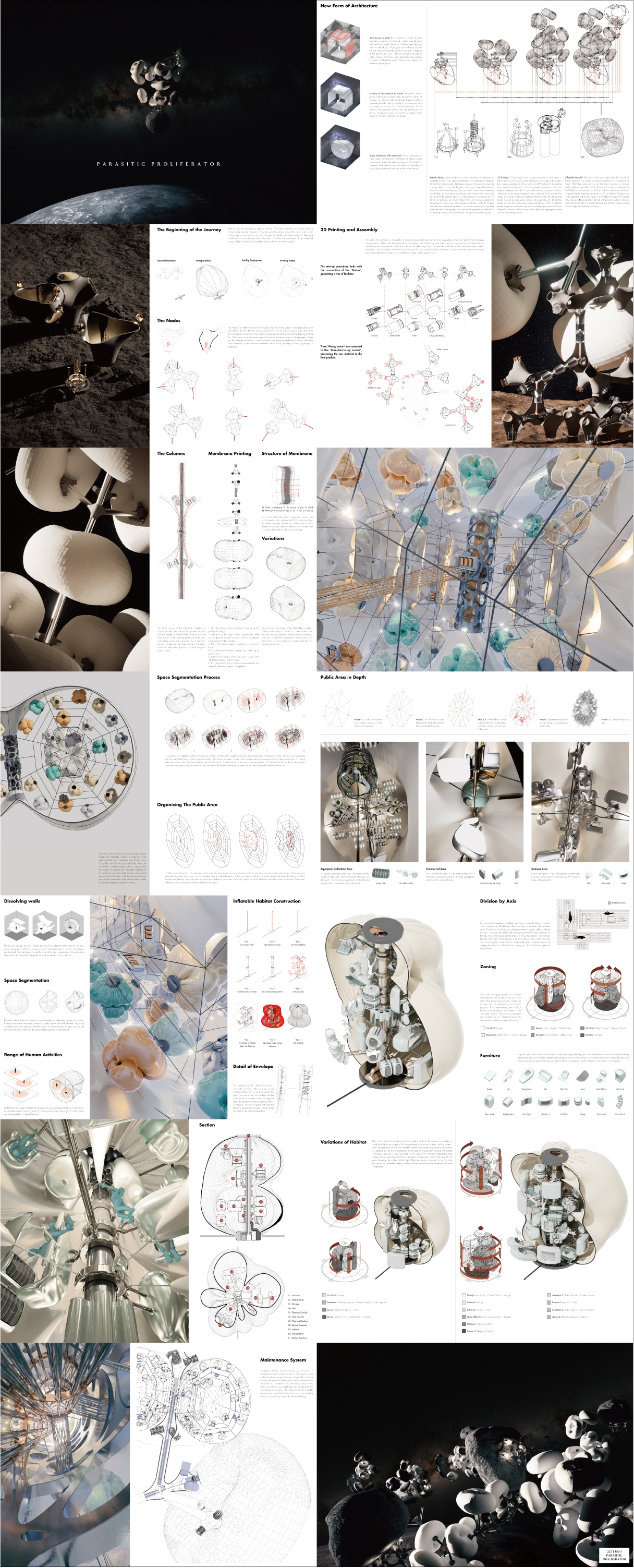 Parasitic Proliferator is a space habitat building
upon itself with as little intervention from the
Earth possible. Scale and design of space facilities
launched from Earth are heavily limited by the
payloads of rockets. ISS, for example, architectural
qualities are compromised noticeably to meet the
limit.
Parasitic Proliferator is a space habitat building
upon itself with as little intervention from the
Earth possible. Scale and design of space facilities
launched from Earth are heavily limited by the
payloads of rockets. ISS, for example, architectural
qualities are compromised noticeably to meet the
limit.
With asteroid mining and space 3d printing, such
compromisations are no longer needed. Space
facilities are built in space without launching,
therefore habitats can be designed with better
consideration on space itself.
Parasitic Proliferator builds space habitat out of
inflatable membrane. Absence of gravity and a sense
of direction in space dissolves the identity of
wall, floor, and ceiling - reducing them to a
membrane simply dividing interior from exterior. The
membrane may softly embrace the vulnerable human
movement in a microgravity environment.
Fully automated infrastructures for mining and
manufacturing are sent from Earth, and attached to
the Node - the structural framework. From these
infrastructures, additional facility units and
inflatable complex, which is a human habitat, are
built. In the complex, wires fix individual habitats
and public areas on air. Each habitats divide its
internal space by pulling membrane to the core.
Furnitures are fixed on the core. Parasitic
Proliferator becomes an outpost for space
development as the proliferation proceeds.
Jury’s comment
It is a project about architecture in space. Based
on various information and technologies known
through space stations and travel, which are
actively occurring now, it proposes an architectural
environment with zero gravity. The proposal are
brilliantly explained from A to Z, such as how to
create space, what to assemble, where to expand with
unit from earth, how people to occupy, and even how
to generate and maintain energy. In addition, the
architectural form and its representation were
excellent.
SELECTED WORKS

YEO, TAE YOUNG
KIM, JO UN
JUNG, DONG
HWAN
UNIVERSITY OF SEOUL
HANYANG UNIVERSITY
Post-Dom-ino


LEE, SEUNG JUN
LEE, JAE WOONG
WOO,
SEONG HYUN
KYUNG HEE UNIVERSITY
HANYANG UNIVERSITY ERICA
Subscribe Your Lifestyle

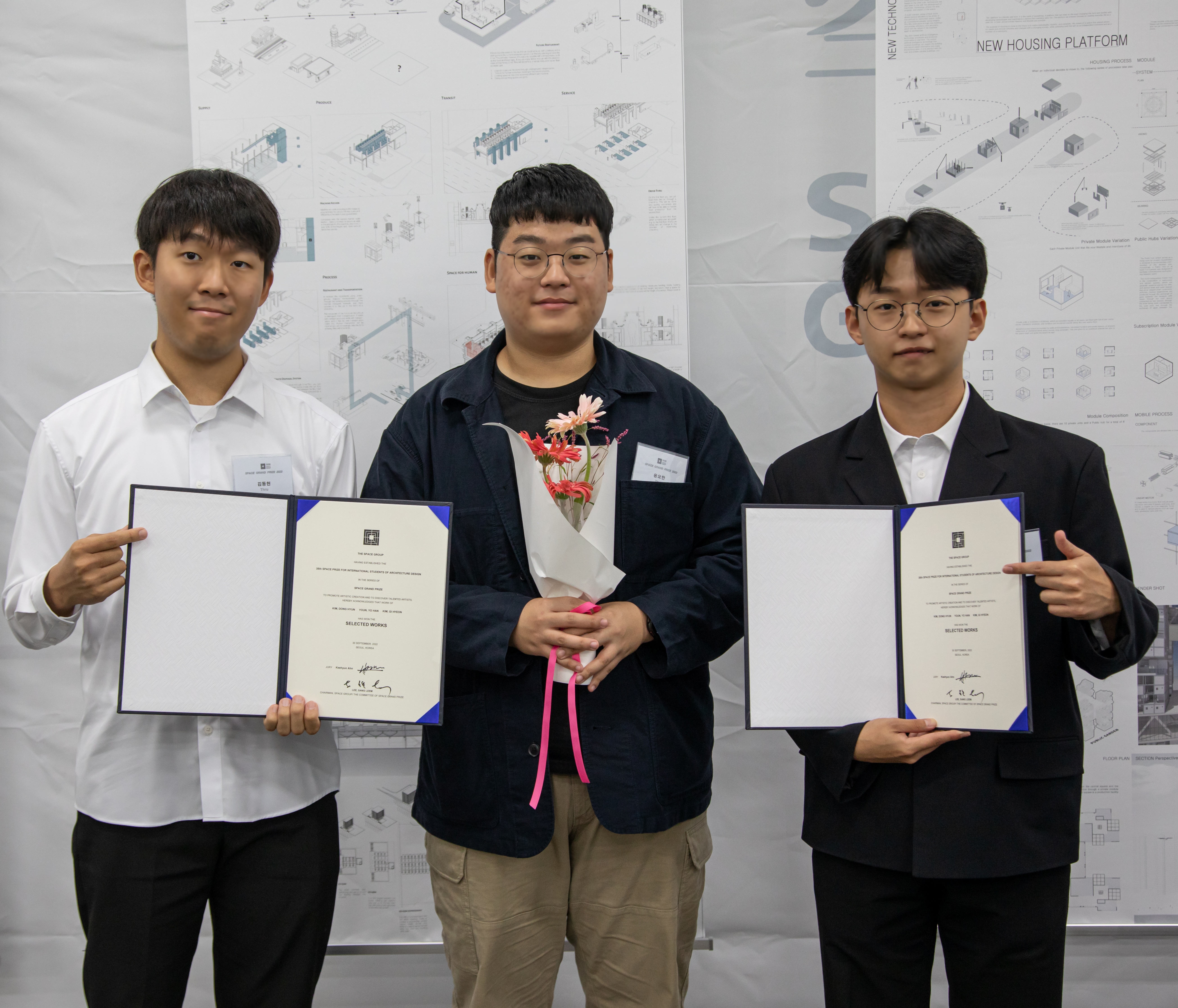
KIM, DONG HYUN
YOUN, YO HAN
KIM, GI
HYEON
YONSEI UNIVERSITY
Thru
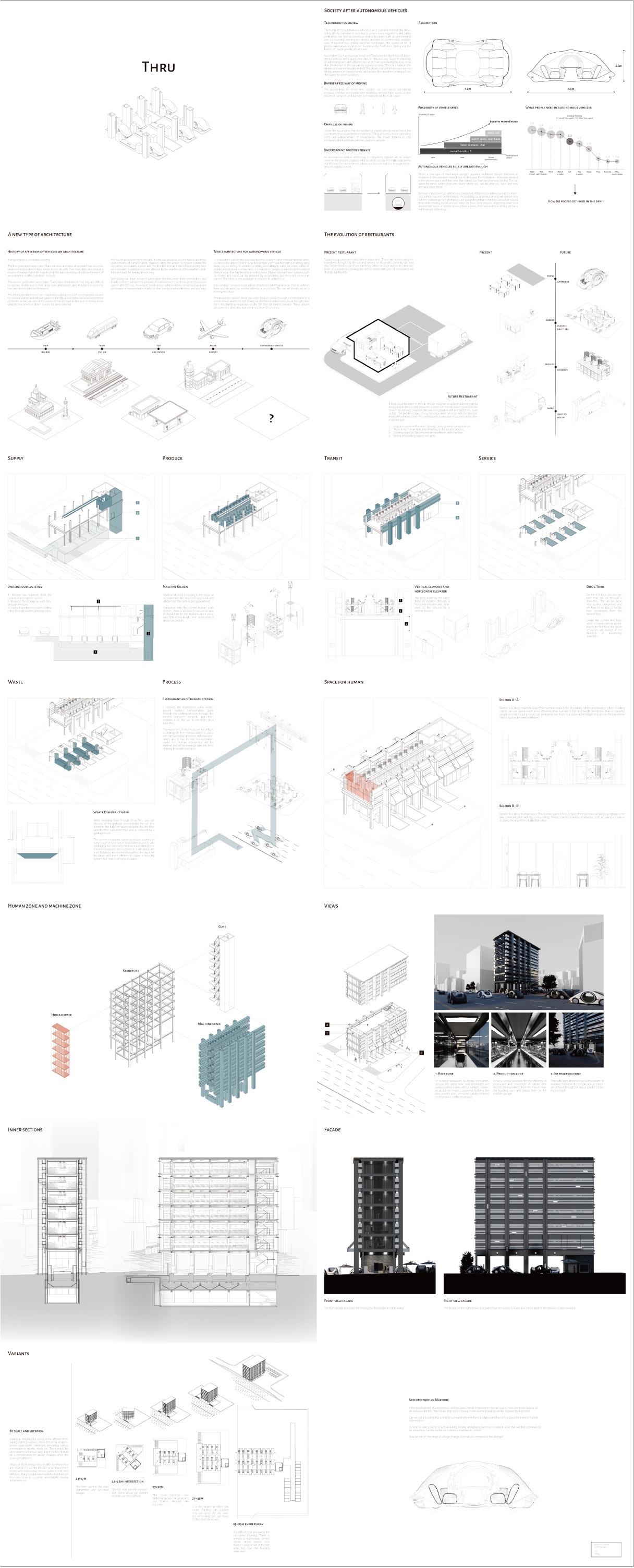
HONORABLE MENTION

PARK, SANG HWA
JANG, SEON YEONG
KOREA NATIONAL UNIVERSITY OF TRANSPORTATION
ZERO CONNECT


LEE, DONG YEON
HONG, HYEON KI
KANGWON NATIONAL UNIVERSITY
Metro Space.net


CHOI, JI IN
KIM, JI HUI
HANYANG UNIVERSITY
Relocated Cinema

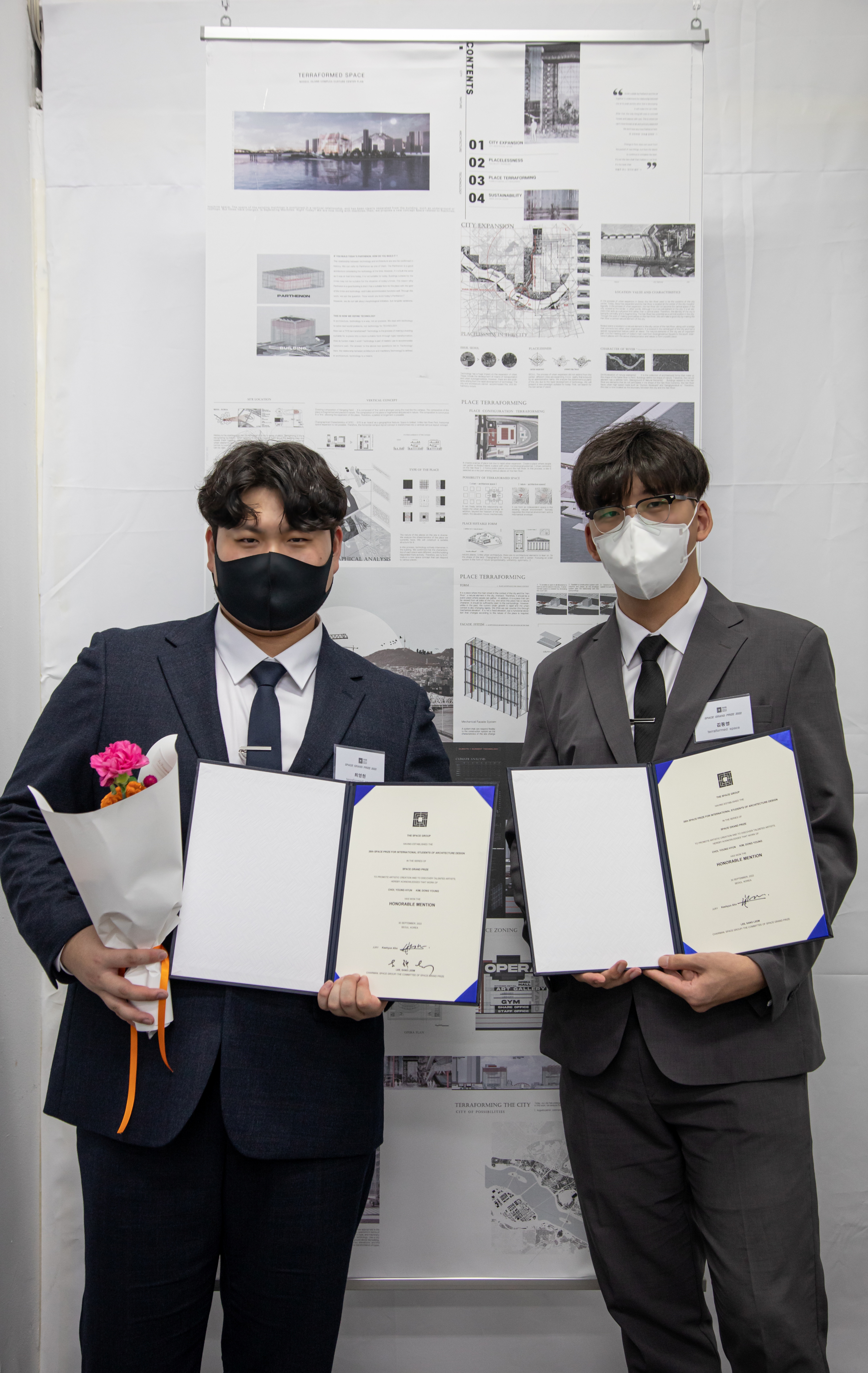
CHOI, YOUNG HYUN
KIM, DONG YOUNG
YEUNGNAM UNIVERSITY
terraformed space
